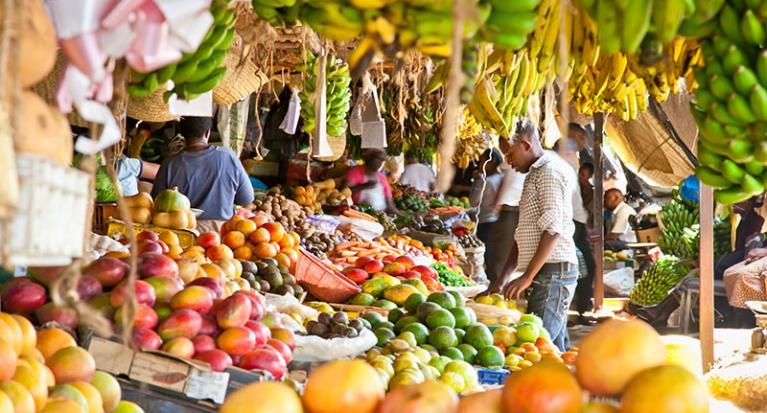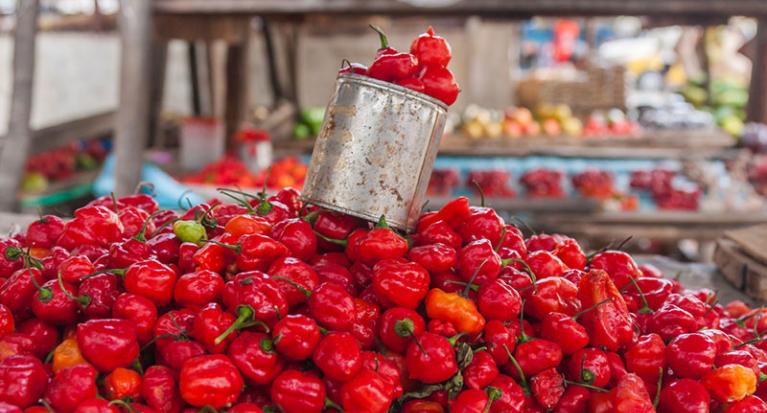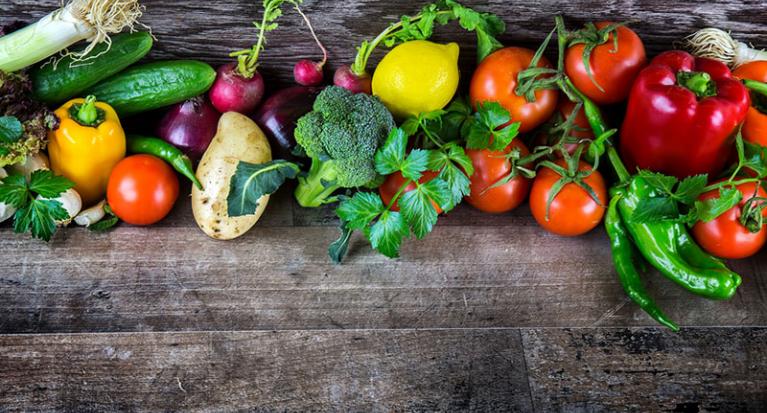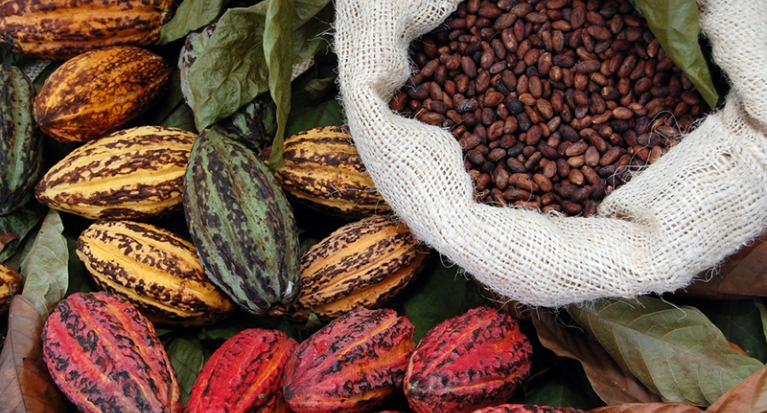From the Garden to Curdling Milk
Many countries where cheese is made have a long tradition of using vegetable rennet.
Artichoke and artichoke flower.
©Shutterstock/bjul
Plant extracts have been used as milk coagulants (vegetable rennet) since ancient times: As the Iliad confirms, the Greeks used the juice of fig leaves to coagulate milk. Many countries where cheese is made, such as the Mediterranean regions of Spain, Portugal, North and West Africa and some parts of southern Europe, have a long tradition of using vegetable rennet. Often, these cheeses are made from goat’s milk or sheep's milk, because vegetable rennet may produce a bitter taste in cow's milk cheeses1.
Plant Rennet in Cheesemaking
There are four main sources of rennet: animal rennet (extracted from the stomachs of slaughtered calves) microbial rennet, recombinant chymosin produced by genetically modified microorganisms (GMOs) and vegetable or plant rennet. Historically, most cheesemakers have used animal rennet. Recently though, various factors have led to renewed interest in the use of plant-derived sources of milk coagulants for making cheese. Such factors include the high price and limited availability of ruminant stomachs, dietary regimes such as lacto-vegetarianism, religious restrictions (i.e., Kosher and halal) or the ban on recombinant calf rennet in many European countries (e.g. France, Germany and the Netherlands). Lacto-vegetarians could consider cheese produced using rennet from these three countries as vegetarian.
However, replacing animal rennet with milk-curdling enzymes from plants to make cheese is not the simplest solution. They have a negative impact on the texture and flavour of the cheese and produce a lower cheese yield as compared to other sources of rennet1.
Plants which can be used as a source of vegetable rennet in cheesemaking include Yellow Bedstraw or cheese rennet (Galium verum), thistle cardoon, artichoke and other species of the Cynara genus1,2, stinging nettle (Urtica dioica) and Sodom apple (Calotropis procera).
A long European tradition
In Europe, Yellow Bedstraw was long since used to curdle milk for cheesemaking, as a substitute for or to supplement calf's rennet, resulting in one of its common names, cheese rennet. Maude Grieve notes that, in 16th century England, Yellow Bedstraw, often combined with the common stinging nettle, was used for making cheese in Gloucestershire. However, by the end of the 18th century, it was no longer used in cheesemaking and the exact methods employed have since been lost3. It is believed that the leaves and stems, which contain the milk curdling compounds, were added to a yellow dye and used to make an extract solution. This extract most likely contributed to the rich golden colour of the cheese. Today annatto (Bixa orellana L.) has replaced Yellow Bedstraw as the natural colouring agent in Gloucester and Double Gloucester cheeses4.
Spain and Portugal are the largest producers of vegetarian cheeses today. They have a rich tradition in using coagulants from cardoon thistle, artichoke and other species of the Cynara genus for their vegetarian cheeses. The traditional tortas from the Extremadura region of Spain are coagulated using cardoon thistle. Azeitão and Castelo Branco from Portugal and Chiviri from Spain are other excellent examples of vegetarian cheeses from the Mediterranean region5. The texture and flavour of these cheeses may prove a little unusual but very pleasant.
It is the stamens of the cardoon, artichoke and other related species which contain the compounds used to curdle milk. They are plucked or cut from the flower and then dried and ground into a powder, which is then steeped in water to extract the milk curdling enzymes. This solution is filtered to remove unwanted residues and is then used to curdle milk in the first steps of the cheesemaking process. Fresh stamens can be used but, to avoid storage problems, such as the development of mould, stamens are usually dried and then, if stored properly, they can be used for up to 2 years6.
Finding the right cheese
‘Vegetarian’ cheeses are more common in the market than one might think. However, they are not always easy to spot since labelling is often incomplete or does not mention which type of rennet was used. Kosher- or halal-labelled cheeses cannot have been made with animal rennet and can therefore be considered vegetarian by lacto-vegetarians.
Many traditional European cheeses, such as Parmigiano-Reggiano5, are required by law to use animal rennet to meet appellation requirements. When vegetarian versions exist, they bear a generic name such as Parmesan cheese, rather than the official AOC name. Fortunately, there are many websites that list vegetarian cheeses, but some do not or cannot distinguish cheeses made with vegetable rennet from those produced using recombinant chymosin.
For people avoiding genetically modified produce in their diet, it is important to look out for this distinction, as recombinant chymosin is produced by GMOs. Over 90% of cheese produced in the United States is made with recombinant calf chymosin, making the list of GMO-free alternatives quite short.
No matter what your dietary inclinations are, finding cheeses made using vegetable rennet is well worth the effort. Their unique flavours and soft, inviting textures are a great culinary detour from more traditional cheeses produced with animal rennet or recombinant rennet. Why not try a nice La Serena (Spain) or Zimbro (Portugal), produced using thistle rennet, both of which have a distinctly briny flavour? Or plant some Yellow Bedstraw, cardoon or artichoke and make your own vegetarian cheese? Either way, you will be rewarded with a wonderful and tasty experience!
1. MANZOOR Ahmad Shah, SHABIR Ahmad Mir, MOHD Amir Paray. Plant proteases as milk-clotting enzymes in cheesemaking: a review. Dairy Science & Technology. 2014. 94(1), pp. 5-16. DOI 10.1007/s13594-013-0144-3
2. TOUSSAINT-SAMAT, Maguelonne, 1994. A history of food. Wiley-Blackwell.
3. MABEY, Richard, 1996. Flora Britannica. Chatto & Windus / Sinclair Stevenson.
4. http://www.cheese.com/double-gloucester [consulté le 15 octobre 2015]
5. http://blog.formaggiokitchen.com/2013/02/04/the-rennet-story-animal-vegetable-and-microbial [consulté le 15 octobre 2015]
6. http://joyofcheesemaking.blogspot.ch/2010/10/homegrown-rennet.html [consulté le 15 octobre 2015]
DOSSIER Delicious discoveries |
Cheese
Man soon realised the usefulness of transforming milk to preserve it; archaeologists have proven that curdled milk was already consumed in various parts of the world 6000 years BC. Cheese making traditionally starts with maturation of milk by heating it and adding lactic bacteria....
Fermentation
Fermentation is a biological process triggered by microorganisms. For food, these fermenting agents convert sugars and proteins into alcohol, acid and carbon dioxide (CO2). These different products modify the environment and may prevent other microorganisms from propagating....
Sterilisation
Sterilisation is a process that involves destroying all microbial germs and certain enzymes in a food. The technique consists of putting a food preparation into an airtight container and heating it to a temperature of more than 100ºC.
A revolutionary sterilisation...
Cooking techniques
People have used fire on a regular basis for 500,000 years, first taking advantage of natural phenomena such as lightning strikes and volcanic eruptions. Then 40,000 years ago, humans brought fire under control. This changed our way of life forever. Cooking in the embers, grilling, baking and,...








